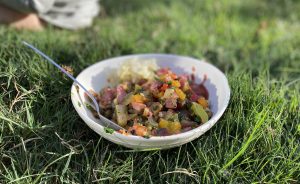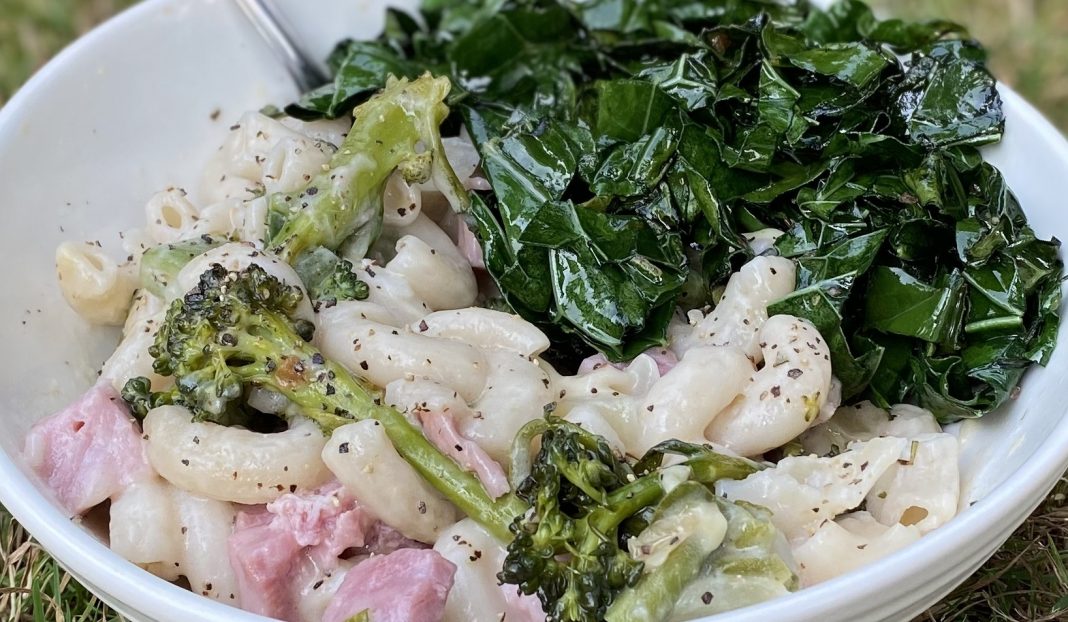By now, most people are aware of the role of inflammation in creating disease. It has been linked to everything from cardiovascular problems and obesity to rheumatoid arthritis, irritable bowel syndrome (IBS) and even cancer. But although sugar is a known culprit in developing inflammation, fewer are aware of the many seemingly innocuous foods that contain excess sugar and how that impacts the body. Heart of Wellness dietitian nutritionist Laura Woodworth works with clients to identify dietary causes of inflammation linked to various conditions and help them make adjustments to improve their health.

Not all inflammation is bad, Woodworth points out. “Inflammation is part of our body’s natural process. It serves a purpose. When it becomes chronic, however, that’s when things start to break down. One of the ways we can decrease chronic inflammation is by increasing certain foods and decreasing others.”
High sugar products like soda increase our blood glucose levels rapidly because they’re in liquid form, meaning they’re already broken down for absorption into the bloodstream. “Our blood glucose level spikes and our body reacts by releasing insulin to signal our cells to take that glucose in for energy,” Woodworth explains. “Many times, our body overcompensates, and we’ll have highs and lows which cause stress to the body, resulting in inflammation. If we decrease those spikes and low points in our blood glucose, we can decrease our general rate of inflammation and stress in the body.”
Some foods, like milk chocolate bars or other sweets, obviously contain plenty of sugar. Others, however, can be harder to spot. In those cases, the glycemic index is a good way to monitor how much sugar we’re consuming. This system assigns a number to carbohydrate-containing foods according to how much each food increases blood sugar.

Ideally, food will have a glycemic index of 50 or less. “If it’s up close to 100, then it’s like a punch to your system in terms of sugar,” Woodworth says. “If it’s down toward the bottom of the index, it’s a gentle introduction of the sugars contained in the item, and by sugars, I mean carbohydrates.” Low glycemic index foods include green vegetables, most fruits, raw carrots, kidney beans, chickpeas, lentils and bran breakfast cereals.
On the other end of the spectrum, some of the worst offenders might be a surprise. Aside from cakes, cookies and sweet treats, they include breakfast cereals and cooked breakfast bars, white rice, white and whole wheat bread, potatoes and French fries, chips, rice crackers, fruits like watermelon and pineapple, and dried fruits such as dates, raisins and cranberries.
And then there’s fruit juice, especially orange juice. “It might seem like orange or apple juice wouldn’t be that bad because they’re from fruit, but all the juices are high on the glycemic index,” Woodworth notes. “Even if you have a little glass of juice at breakfast, it’s not a good way to start your day because it’s just a bunch of sugar.”
She’s created a handout for clients with alternatives to high-glycemic staple foods like pasta, with noodles made from zucchini or squash. Many stores now carry rice and pasta made from cauliflower. Just that simple change can make a difference. “It’s a huge shift in your macronutrient intake,” Woodworth says.

Another option is an elimination diet, in which patients start cutting different foods groups such as dairy and carbohydrates out of their diet and then gradually re-introducing them to identify which ones are causing a reaction. Many resources now exist online with recipes using alternative ingredients to traditional high-sugar foods. “It’s kind of like a 30-day cleanse because you cut out a lot of things that cause inflammation like dairy products, simple carbohydrates, and processed foods,” Woodworth explains.
Intermittent fasting and time-restricted eating is also an option for reducing inflammation. Several methods exist, but one of the most common is eating only within a prescribed window of time, typically between five to eight hours during the day. Woodworth has found the approach effective with clients. She recalls one woman who was dealing with joint pain and other issues.
“We talked about reducing carbohydrates because this patient was having a lot of orange juice,” she says. “Our goal was getting the carbohydrate load down so that there wasn’t any sugar before bed. This patient started eating her first food later in the day and her last food earlier. Her eating window was between 11:00 and 5:00. She came back after a month and her joint pain had decreased.”

Woodworth listens to patients and takes their eating habits and lifestyles into account before recommending any treatment program, understanding that food is often much more than simply fuel. “There’s a spectrum,” she maintains. “Our entire culture has a disordered eating problem, but some people get caught up in it and have an addiction with sugar or other tastes or textures when they’re having emotional highs or lows. Sometimes the conversation is less about the food and more about what’s going on inside of them.”
In support of community education Woodworth often participates in free webinars to share her expertise with those that need it. Those webinars are available on the Heart of Wellness website. She is also a regular participant in Heart of Wellness’s Facebook group–Empowering a Healthier You, which is open to anyone that can benefit from tips and ideas on improving their own health and wellness. To learn more about how Woodworth works with patients to create healthy eating habits and reduce inflammation, visit the Heart of Wellness website or call 360.570.0401.
Sponsored



















































